Marketing
Let’s be friends: Integrating email and social media
Treat email and social as one larger integrated marketing channel instead of creating dedicated strategies for each. Here's how to build one cohesive story.
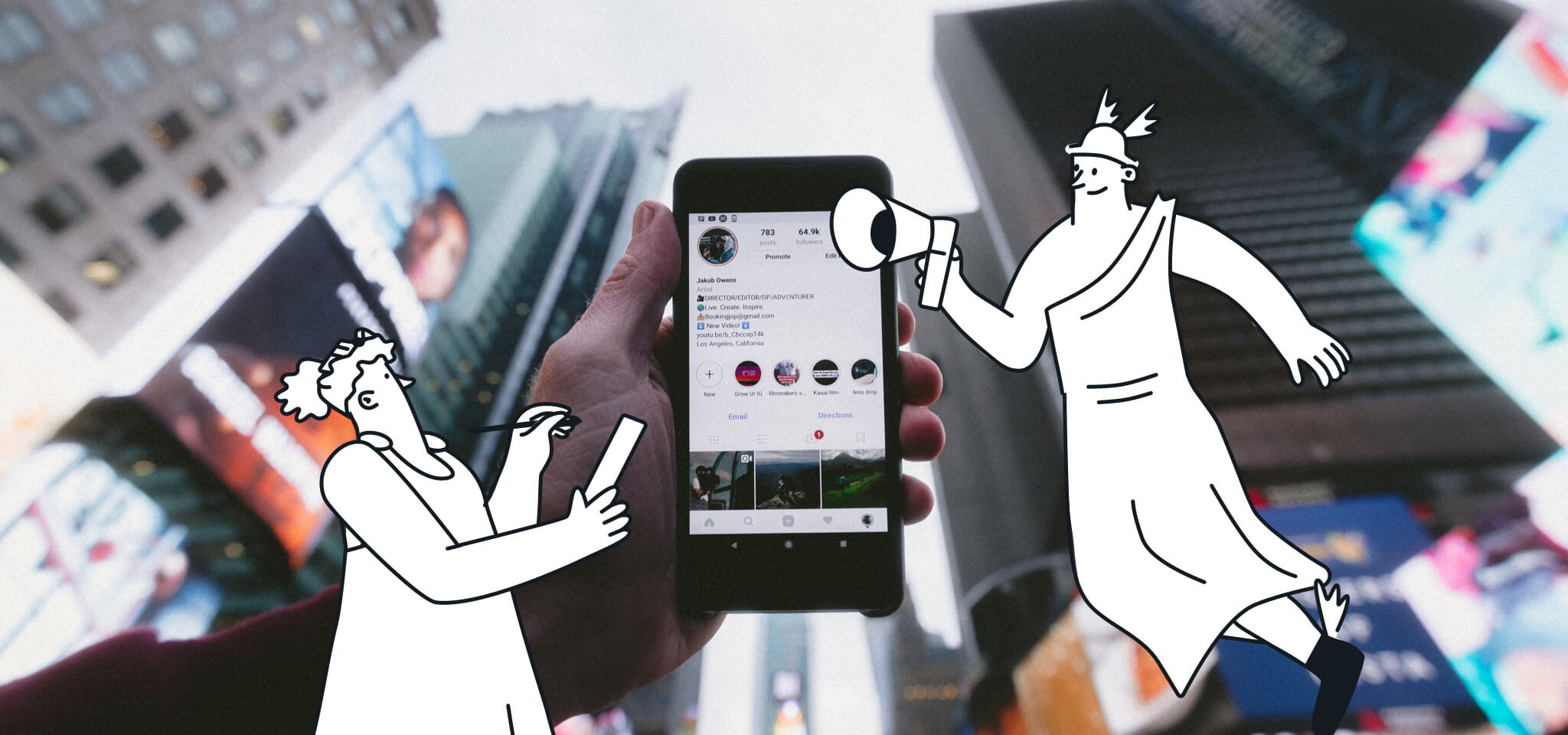
PUBLISHED ON
Twitter, Facebook, Instagram, Pinterest, Email … the list goes on. There are so many channels to manage and keep track of these days, how do you do it? The key is to do less.
Treat email and social as one larger integrated marketing channel instead of creating dedicated strategies for each. Work smarter, not harder. Cross-share content and use each channel to drive additional traffic to one another, building one cohesive story. Here’s how:
Table of content
Grow your email lists through Twitter
Leverage email contacts to build your Twitter following
Dedicated “let’s get social” email campaign
Listen in on social
Making your contact list go the extra mile
Grow your email lists through Twitter
Many marketers don’t know about Twitter cards because they are not heavily promoted. The Lead Generation card drives email sign-ups from your Twitter page. You can also add the card to an ongoing campaign to selectively target a particular demographic.
It looks exactly like a tweet and takes just minutes to create:
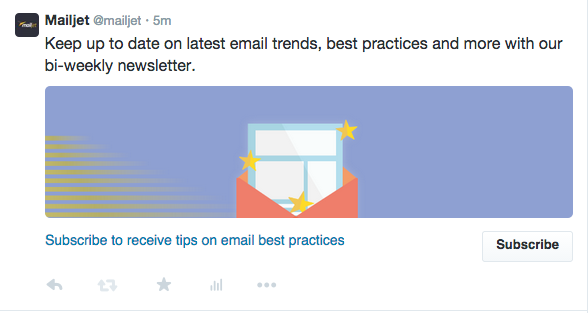
You can either set these email addresses to automatically filter to your CRM or Marketing Automation System or manually download these addresses as a CSV.
Leverage email contacts to build your Twitter following
On the other hand, you can use your existing email contact list to build your Twitter following. Add your most engaged email recipients on Twitter and develop them into brand ambassadors. Or, try to engage less active email recipients on Twitter - perhaps they prefer this channel instead.
To add a list, visit the Discover tab, you’ll find an option to “Find Friends”.
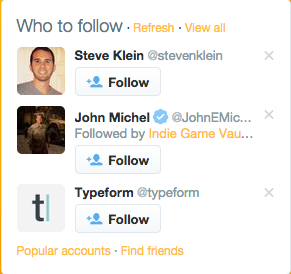
Go to “manage the contacts” to manually add a CSV of your desired email contacts.
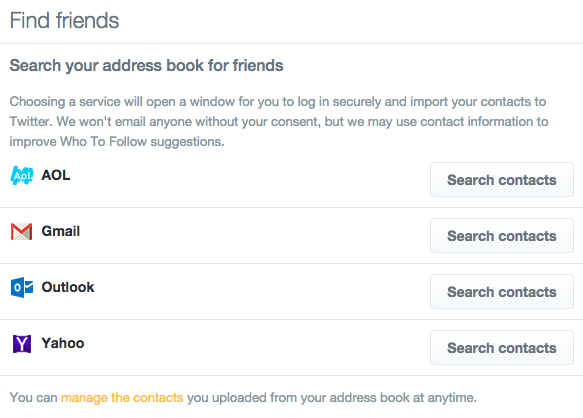
Dedicated “let’s get social” email campaign
Last but not least, if you haven’t done so already, remind email subscribers of your social media channels. You can build a dedicated email campaign promoting your social media channels and their added value.
The Container Store did a great job in the example below. They kept the design simple and differentiated what each channel offers. Follow them on Twitter for updates and on Instagram for behind-the-scenes peeks.
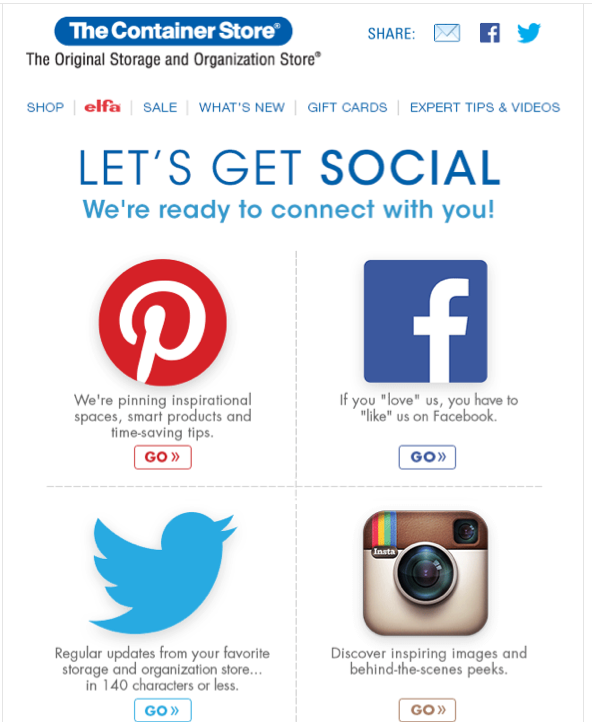
Listen in on social
Use media monitoring tools like Mention and Buffer to stay up to date on what your users are talking about on social and how they are using your product. Don’t be afraid to go back to the basics and use Facebook’s Audience Insights and Twitter’s Analytics Manager as well.
Facebook’s Audience Insights tells me that our primary Facebook audience is between 25-34 years old. Consumers ages 25 – 34 are more likely to access the Internet through their phones, so perhaps in their emails we add click-to-share buttons that allow them to easily share blog posts on Facebook.
Let your customers come to you
Not all customers are going to be equally engaged with your email content over time and that’s alright. Give them the freedom to choose how they hear from you and you’ll be rewarded with stronger brand loyalty. Build a preference center that allows customers to choose how often they receive email and what type of content they’ll see.
While you may be initially concerned that you’re missing opportunity to communicate, remember that social media can make up for the gaps of silence. On both Facebook and Twitter, you can set up retargeting campaigns for subscribers that open or click-through.
To set up your audience for your retargeting ad on Facebook, first visit your Ads Manager.
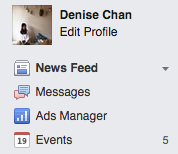
Then, on the right-hand side toolbar, go to Audiences.

Since you want to upload your own list of email contacts, go to “Create a Custom Audience”.
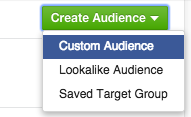
Have your CSV contact list of choice ready on hand and either upload or copy and paste the list.
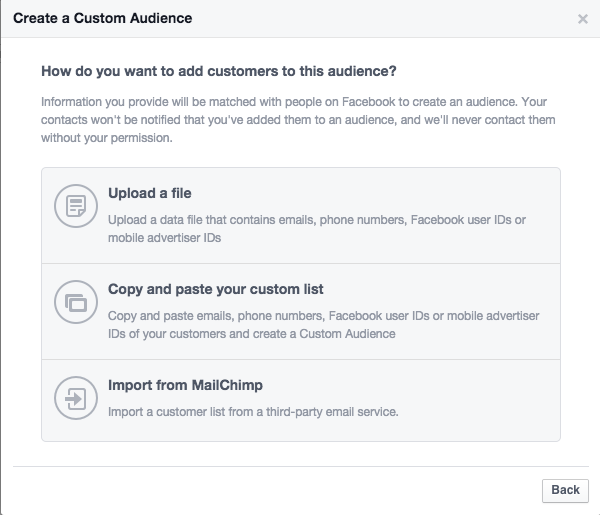
Then, you can create the campaign accordingly. Remember that retargeting ads are most effective when keeping frequency in mind. Be sure to rotate out fresh creatives and content to prevent customer fatigue.
In Twitter, you can do the same by visiting your Audience Manager.

Select “Create A New Audience” and upload your own email list.
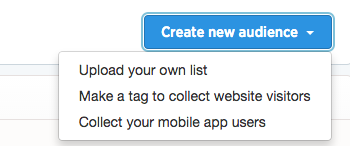
Then, you’re given the option to name your audience. Be sure to be as descriptive as possible, since you will ideally update and segment your email contact list on a regular basis.

What are some ways you integrate your email and social media marketing strategies?








